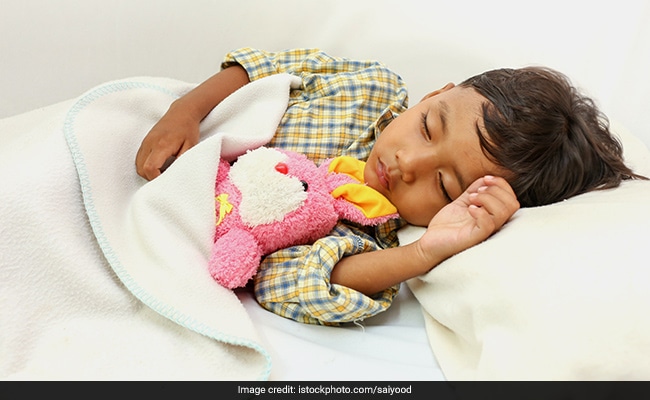Even though thalassemia affects millions of people in the world, not many are aware about this condition. Early symptoms include fatigue, weakness, bone deformities, pale skin etc.

All thalassemia patients need timely supply of safe blood for regular blood transfusion
There are 270 million Thalassemia patients in the world, yet India is called the Thalassemia capital because the country has the largest number of children suffering from this inherited blood disorder that causes the body to have less hemoglobin than normal.
More than 10,000 children are born in India with Thalassemia every year. According to World Health Organization, four million Indians are thalassemia carriers, while more than 1,00,000 are the actual patients battling the disease. Parents, who are usually asymptomatic, are the carriers of Thalassemia, and have a 25% chance of passing the disease to their children.
Even though thalassemia affects millions of people in the world, not many are aware about this condition. Early symptoms include fatigue, weakness, bone deformities (especially in the face), pale appearance or yellowish skin tone, slow growth rate, lowered immunity levels, and iron overload.
Due to financial barriers and lack of access to treatment, many young patients in India do not survive into adulthood. One of the major challenges is the lack of adequate pre-natal diagnosis facilities for Thalassemia, especially in rural areas. To manage the disease, patients need to take regular blood transfusions lifelong, along with iron chelation to treat iron overload in the body. These are very taxing procedures for young children that strain their health.
All Thalassemia patients need timely supply of safe blood for regular blood transfusion. It is not a permanent solution and is quite a painful process for a child. The annual requirement of packed red cells for Thalassemia patients is about 2 million units in India. Although patient organizations and regional blood banks have been working relentlessly towards fulfilling this requirement, the demand is significantly more than the current supply. Lot of families have to struggle month after month in making packed cells available for their children.
Repeated packed red cell transfusions lead to iron overload in patients. Excess iron gets deposited in organs like liver, heart and endocrine glands. This iron overload is usually the cause of death in the second or third decade of life. These patients need to be on medications to remove the extra iron from their bodies to ensure a normal life span for them. Yet, in spite of freely available drugs, less than 10% of Thalassemia patients are adequately chelated in India. Factors like ignorance, poor compliance and, more importantly, unaffordability are major reasons for poor chelation in Thalassemia patients.
Thalassemia is a multi-system problem. In addition to regular blood transfusion and iron chelation, the disease needs to be managed by a multidisciplinary team that should have hematologist, endocrinologist, cardiologist, nutritionist, nurse practitioner, etc. to provide holistic care. There are hardly any comprehensive centers for thalassemia care in India.
However, there is some good news too. With advances in the medical field, thalassemia major, once considered a cumbersome disease with lifelong blood transfusions, iron overload and limited lifespan, has seen a shift in the last decade with blood stem cell transplant, the only curative treatment option available for thalassemia.
Recent data shows 85-90% success rate of stem cell marrow transplantation in patients who have HLA matched stem cell donor. In a blood stem cell transplant, stem cells are collected from blood of the donors and transplanted into the thalassemia patient after their bone marrow has been destroyed by radiation or chemotherapy. Only 30% patients who need transplants have a fully HLA (Human Leukocyte Antigen) matched donor in their family, rest of them depend on an unrelated donor.
Patients and donors of Indian origin have unique HLA characteristics that are severely under-represented in the global database, which makes the probability of finding a suitable donor even more difficult. Indian patients mainly require an Indian tissue match. This calls for increased awareness and need to encourage people in India to register as a potential blood stem cell donor.
Registering as a potential donor is an easy process which can be done through online portal of a stem cell registry such as DKMS BMST Foundation India. Once you sign-up, you will receive a DIY home swab kit to take your cheek swab samples and send it back to the registry! Once an individual comes up as a match for a blood cancer patient, blood stem cells from the individual are obtained from the bloodstream using a procedure called peripheral blood stem cell collection, which is similar to a blood platelet donation..
Source: WHO, GLOBOCAN and Ministry of Health
(Dr. Nitin Agarwal, MD, Transfusion Medicine, HOD, Donor Request Management, DKMS BMST Foundation India)
Disclaimer: This content including advice provides generic information only. It is in no way a substitute for qualified medical opinion. Always consult a specialist or your own doctor for more information. NDTV does not claim responsibility for this information.
DoctorNDTV is the one stop site for all your health needs providing the most credible health information, health news and tips with expert advice on healthy living, diet plans, informative videos etc. You can get the most relevant and accurate info you need about health problems like diabetes, cancer, pregnancy, HIV and AIDS, weight loss and many other lifestyle diseases. We have a panel of over 350 experts who help us develop content by giving their valuable inputs and bringing to us the latest in the world of healthcare.












